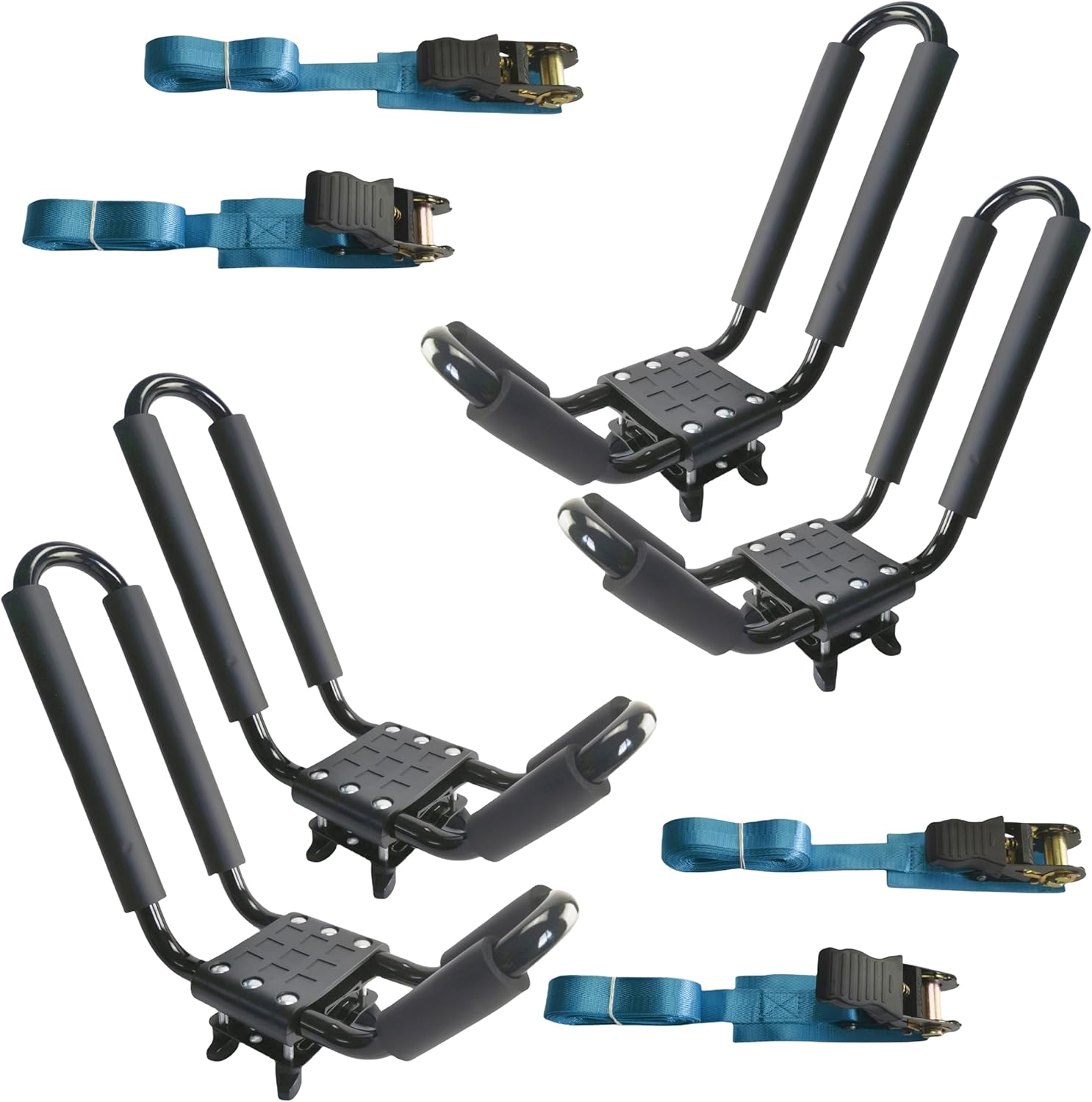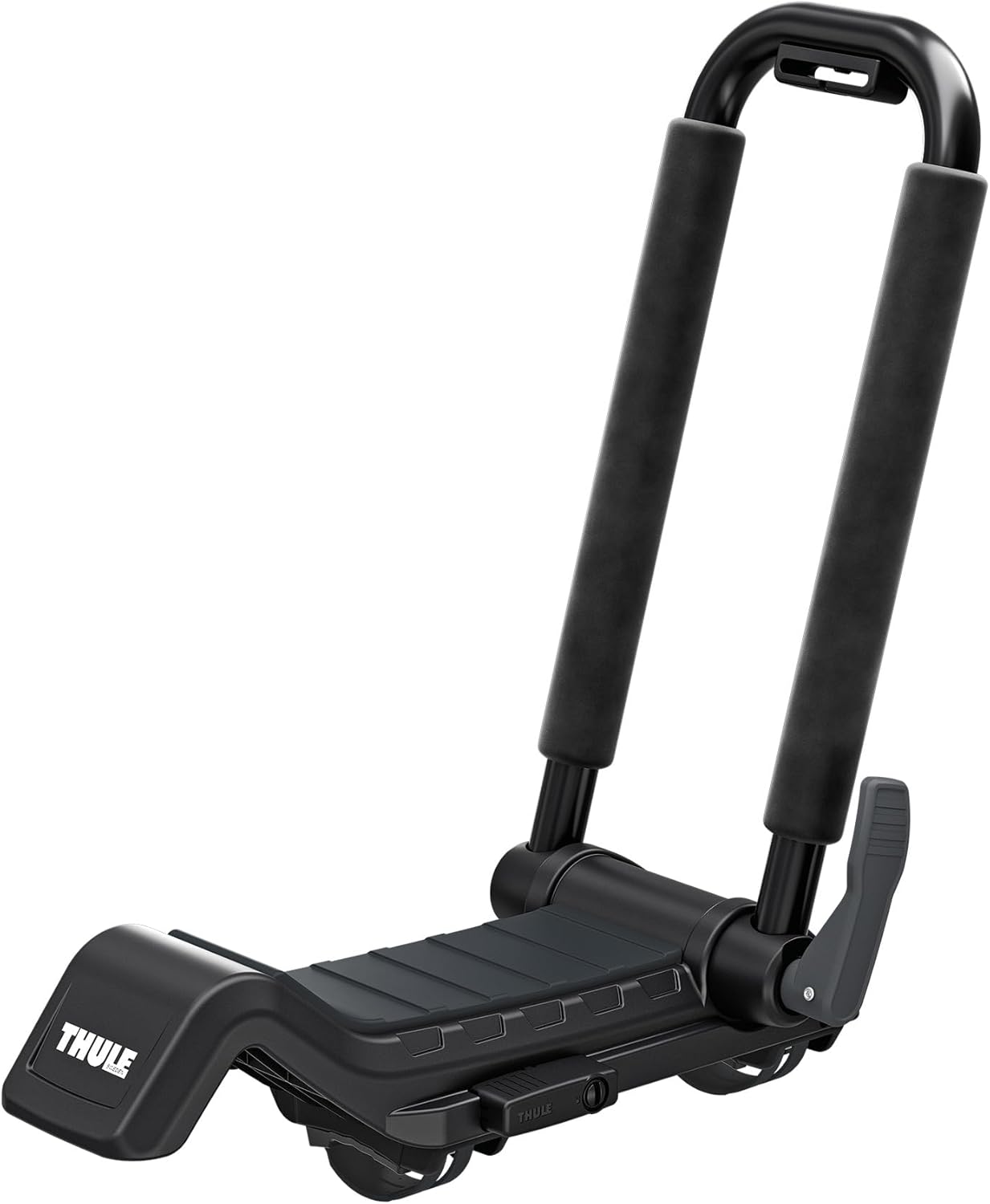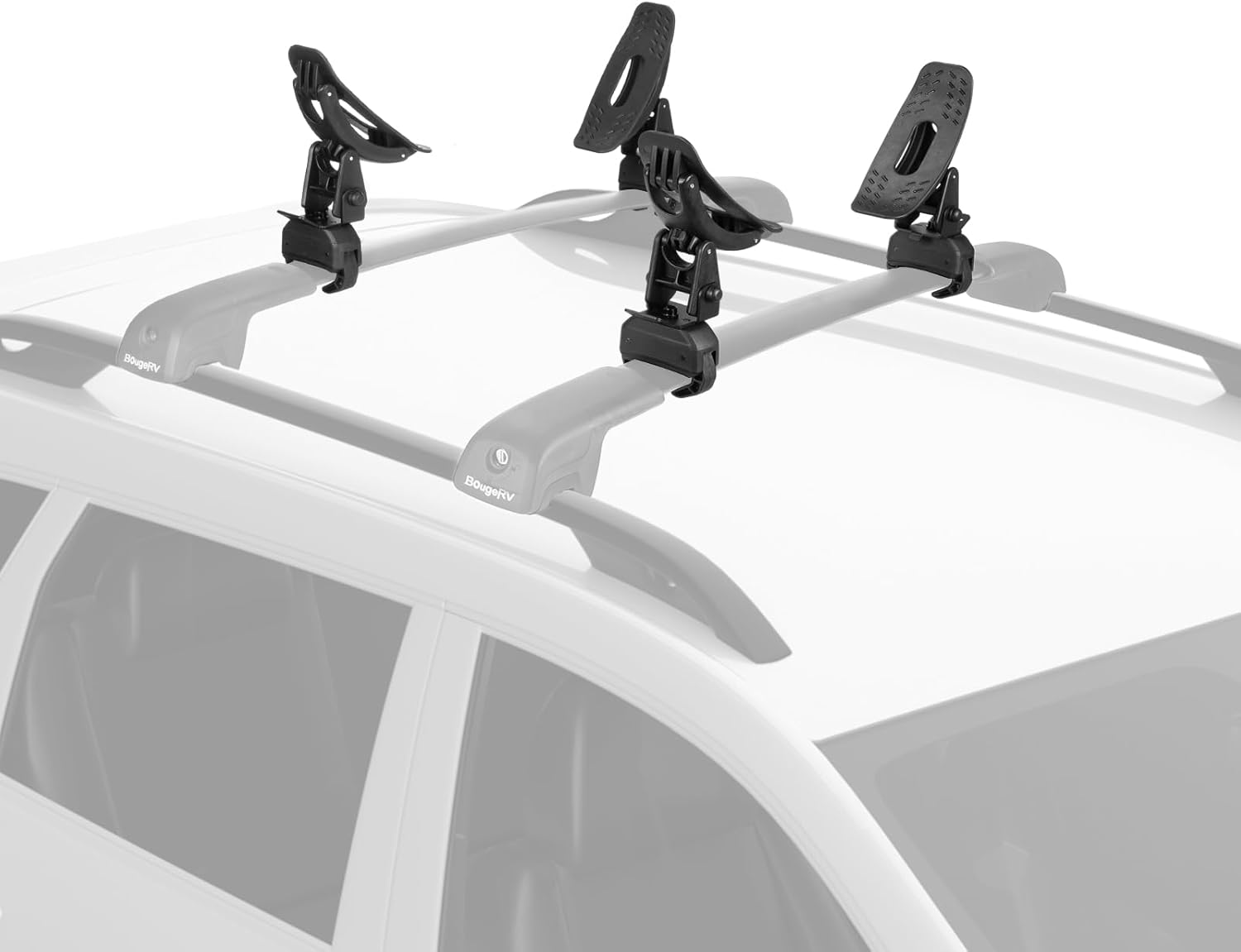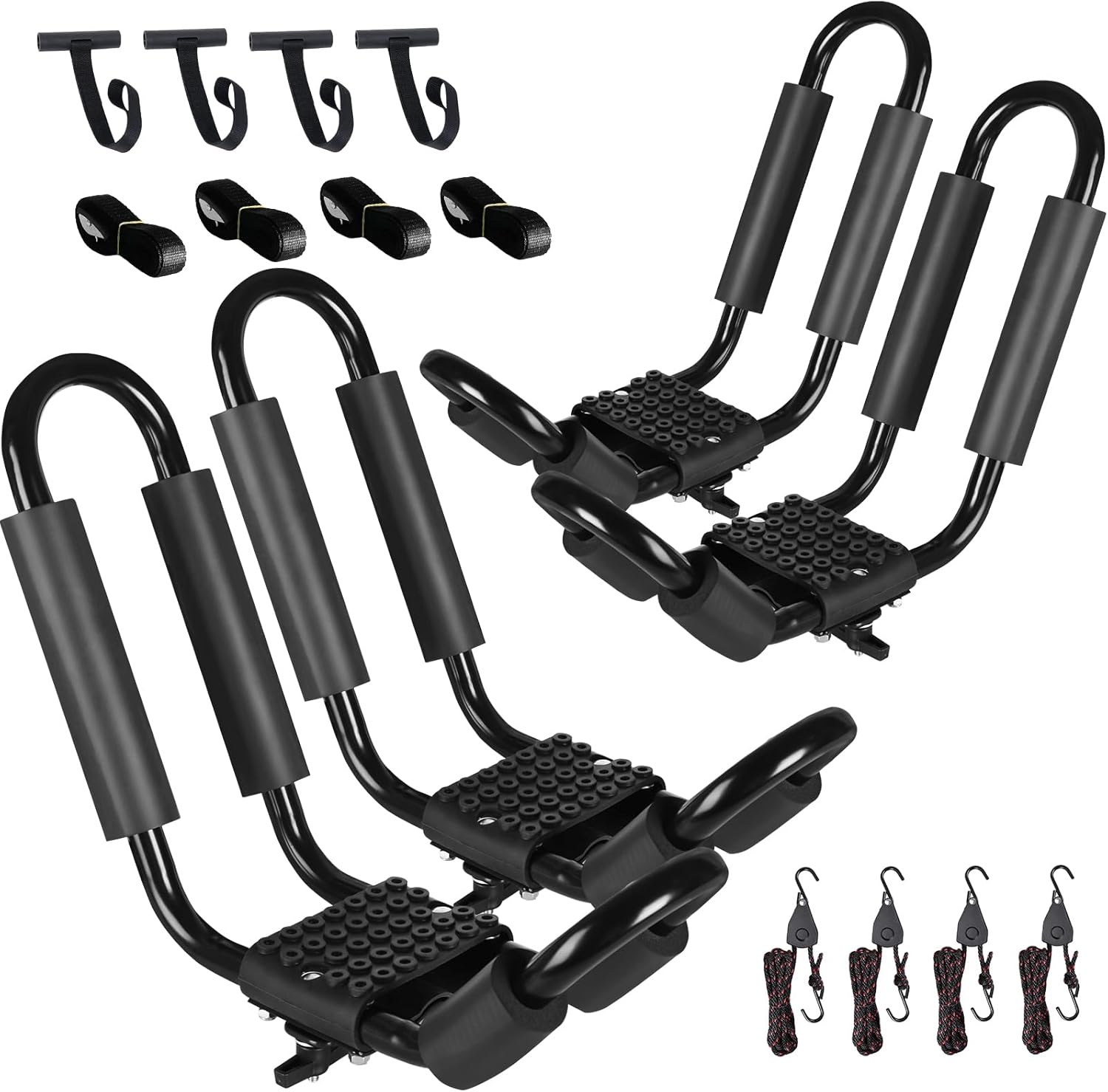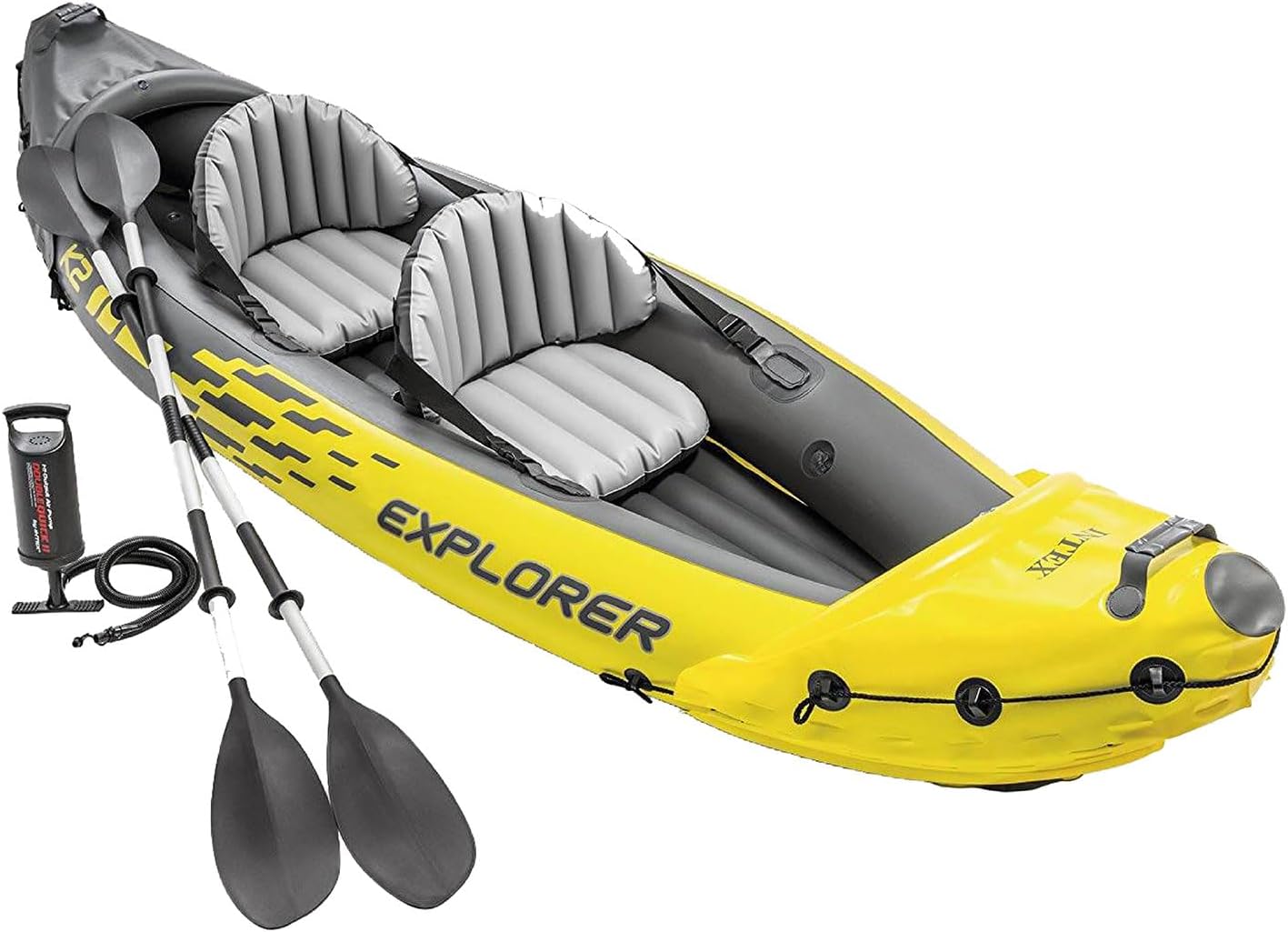How To Transport A Kayak Without A Roof Rack – The Methods That Never Fail
If you’ve ever wondered how to transport a kayak without a roof rack, you’ve probably also wondered how your neighbors will look at you when they see a 12-foot kayak strapped across your little sedan with pool noodles.
Spoiler: they’ll probably cheer you on like you’re auditioning for a low-budget episode of MacGyver: The Outdoor Edition. The truth is, you don’t need fancy gear or a pricey setup to get your kayak from garage to water safely.
But you do need to do it the right way otherwise, you risk scratches on your car, losing your kayak mid-drive, or explaining to your insurance company why your boat decided it was tired of being land-bound.
How to Transport a Kayak Without a Roof Rack
Let’s start with the plain truth. The safest and most common way to transport a kayak without a roof rack is by using foam blocks or pool noodles as a base, cam straps to secure the kayak across your car’s roof, and bow and stern tie-downs to keep the boat from shifting forward or backward.
If your car is too small or the kayak is too long, you can also carry it partially in the trunk or tailgate (for hatchbacks or pickups), or even consider a hitch extender.
The must-follow checklist is simple:
- Use padding (foam blocks, saddles, or pool noodles) to protect your car and stabilize the kayak.
- Place the kayak hull-down and centered on your car roof.
- Run two cam straps over the kayak, routing them through the door frames.
- Add bow and stern tie-downs to secure the kayak from shifting.
- If the kayak extends more than four feet beyond your bumper, mark it with a red flag.
That’s the essential, no-nonsense method. Now, let’s dive deeper into different methods to transport a kayak without a roof rack.
Gear You’ll Need (Buy or DIY)
You can improvise, but there are a few essentials:
- Cam straps (12–20 ft): Safer than ratchet straps, which can crack hulls.
- Foam blocks, saddles, or pool noodles: Padding between your car and kayak.
- Bow and stern tie-downs: Rope or straps attached to tow points for stability.
- Soft loops or strap protectors: Keep straps from rubbing on sharp edges.
- Red flag or cloth: Required if your kayak extends too far beyond your bumper.
Optional extras: a hitch extender for pickups, or if you want to avoid the whole situation, an inflatable kayak.
Method 1: Foam Blocks and Cam Straps (Most Reliable)
This is the gold standard when you need to transport a kayak without a roof rack. Foam blocks or purpose-made kayak saddles create a stable platform.
Steps:
- Place foam blocks on the roof, spaced as wide as the kayak.
- Position the kayak hull-down, bow forward, centered on the roof.
- Run straps over the kayak and through the car’s door frames (not the windows).
- Pull snug but not crushing.
- Add bow and stern lines for safety.
Why it works: The foam protects the car roof, while straps and tie-downs prevent sliding in every direction. This setup is proven safe for long trips.
Method 2: Pool Noodles for Budget-Friendly Transport
Yes, pool noodles. Cut them to fit across your roof, slit them lengthwise, and slip them over straps or roof edges. They create cheap padding that keeps your kayak stable and saves your paint.
Caution: Use heavy-duty noodles, tape them securely, and don’t rely on them alone. Always combine with cam straps and tie-downs.
|
|
|
|
Method 3: Trunk or Tailgate Transport
For smaller cars or shorter kayaks, you can partially load the kayak into the trunk or hatch:
- Slide the stern into the trunk.
- Secure with straps through the trunk latch.
- Tie down the bow and stern to stop movement.
- Attach a red flag if the overhang is more than four feet.
This method is handy but not ideal for long distances. Be cautious about wearing out trunk seals or struts.
Method 4: Pickup Trucks and Hitch Extenders
If you have a pickup, lucky you. Lay the kayak flat in the bed, secure with straps, and let the tailgate down. For longer kayaks, a hitch extender adds extra support and prevents sagging. Foam padding or pool noodles keep the boat from rubbing against metal edges.
Method 5: Inflatable and Folding Kayaks
One growing alternative is simply avoiding the roof dilemma. Inflatable kayaks or folding models fit into a trunk. They’re not as fast or rugged as a hard-shell fishing kayak, but they are convenient for urban paddlers.
Bow and Stern Tie-Downs: Non-Negotiable Safety
Even if your straps feel rock-solid, you must tie the bow and stern. Attach them to your car’s tow hooks or secure points under the bumper. This prevents forward or backward shifting during sudden stops. It also stabilizes against crosswinds on highways.
Overhang Rules and Legal Must-Knows
In most regions, anything sticking more than four feet beyond your rear bumper requires a red flag by day and a red light at night. Some states allow three feet; others five. Always check local DOT rules. Even if not legally required, marking your kayak increases safety and peace of mind.
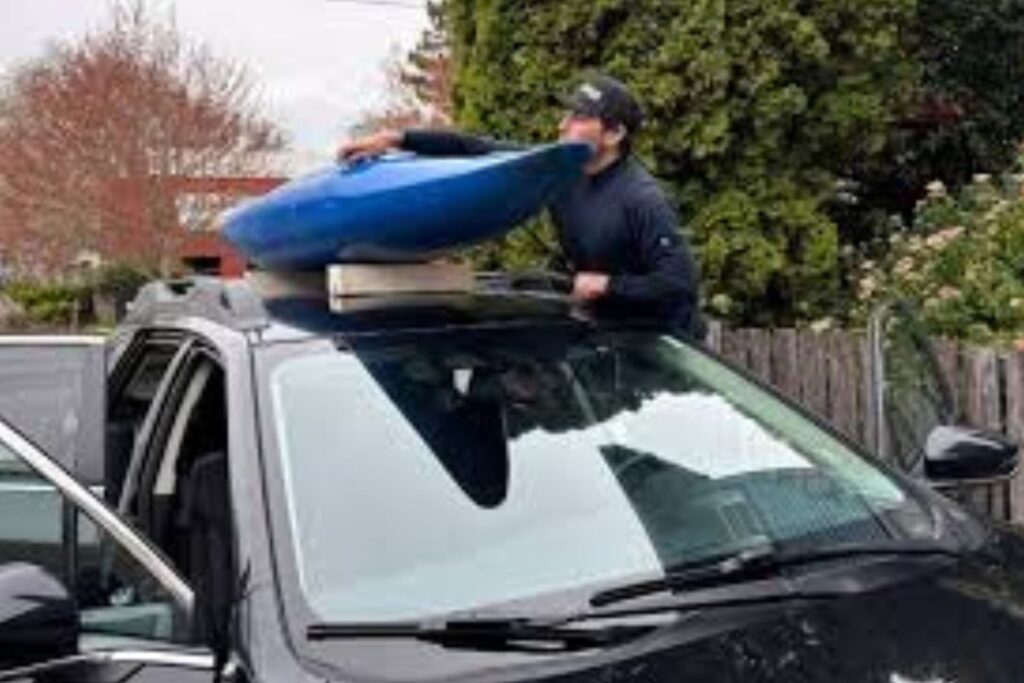
Loading and Unloading Alone
If you paddle solo, figuring out how to transport a kayak by yourself can feel like wrestling an alligator. A few tricks help:
- Use a blanket or towel on the rear of your car as a slide.
- Lift one end of the kayak onto the roof, then pivot the rest up.
- Use your legs, not your back.
- If possible, invest in padded seats for kayaks to reduce total gear bulk when loading.
Patience and practice are your allies here.
Carrying Two Kayaks Without a Roof Rack
So, how to transport 2 kayaks without a roof rack? It’s doable but tricky. Stack them with padding in between (hull-to-hull or deck-to-deck), then use longer straps.
Make sure each kayak has independent bow and stern tie-downs. For frequent double transport, consider a trailer or a proper kayak rack for car without rails to avoid headaches.
Common Mistakes to Avoid
- Over-tightening straps: This can deform the kayak’s hull.
- Skipping bow/stern tie-downs: Even short trips need them.
- Relying on rope knots alone: Use proper cam straps for reliability.
- Strapping through windows: Always go through doors.
FAQs on How to Transport a Kayak Without a Roof Rack
- How to strap kayak to roof rack? Even if you have a rack, always use cam straps across the kayak, plus bow and stern lines.
- How to put kayak on roof rack by yourself? Use the same lift-and-pivot technique, with padding to protect your car.
- What if my car has no side rails? You can still use foam blocks and straps through doors, or get a clamp-style kayak rack for car without rails.
- Can I use ratchet straps? Only if you’re careful. Cam straps are safer.
- Is it safe to drive on the highway like this? Yes, if done correctly. Double-check straps every hour on long trips.
The Bottom Line on How to Transport a Kayak Without a Roof Rack
So, there you have it: every method, every trick, every legal detail about transporting a kayak without a roof rack. Whether you’re improvising with pool noodles, using foam blocks, sliding the stern into your trunk, or carrying two boats stacked on your sedan, the key is preparation and caution.
Straps, padding, bow and stern lines, and a little common sense are the difference between a smooth trip and a highway horror story. Kayaks may be born for water, but with the right setup, they’ll ride safely on land, too.
Now that you know exactly how to transport a kayak without a roof rack, the water is waiting and your neighbors will definitely be watching.
